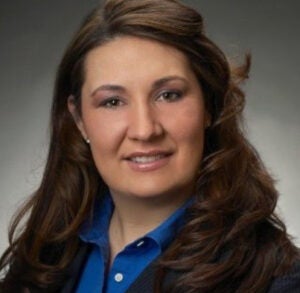It’s been a decade since Spotify introduced podcasts to its app.
Now, Spotify hosts millions of podcasts and, according to Edison Research, 26% of US podcast listeners use Spotify as their preferred service.
And last month, Spotify began making podcast inventory available programmatically through its ad exchange and its self-serve Ads Manager.
Advertisers had been asking for a way to buy podcast ads programmatically, Chloe Wix, Spotify’s global head of product and commercial growth, told AdExchanger.
“Which isn’t surprising, right? All of the buyers we chat with, large and small, want it to be as simple and easy as possible to work with us,” Wix said. “It’s a symptom of how increasingly fragmented the media landscape is getting.”
But despite ongoing investment in its ad tech, Spotify’s ad-supported revenue declined roughly 1% year over year in Q2 to 453 million euros (roughly $523 million).
During its earnings call with investors at the end of July, Spotify execs acknowledged ad revenue growth has been slow, but also said podcasts remain a priority as the company focuses on boosting programmatic ad adoption and improving execution.
Wix spoke with AdExchanger about why podcasts are central to Spotify’s ad strategy.
AdExchanger: What were the main drivers behind making podcast inventory available through your exchange and via self-serve?
CHLOE WIX: We’ve been on a journey over the past three years to make our business, as a whole, more automated – and by “as a whole,” we mean everything from all of our formats to all of our inventory.
Over that time, I’d say the No. 1 request from programmatic advertisers has been, “When can we buy podcasts?”
We launched the initial version of our ad exchange in April with The Trade Desk and DV360, and once we had the foundations in place, we moved as quickly as we could to get podcast inventory enabled directly within DSPs.
Automation is important. But isn’t that almost table stakes by this point?
Automation and performance go very much hand in hand, and it’s not just about ease of use. Advertisers need to be nimble in terms of how they test and learn across formats, including measurement and attribution.
Now that we’ve gotten over the hump of making ourselves much easier to buy, we need to think more critically about how to ensure we have a broad spectrum of measurement capabilities across the funnel.
This is a challenge for us, because people have traditionally seen Spotify as a brand awareness player. That’s not to say branding is an area we plan to abandon by any stretch. But our job now is to prove we can also perform across other types of conversion events.
I’d say that’s not only our biggest area of focus right now; it’s also our biggest area of opportunity.
Now that Spotify’s podcast inventory is available pretty much everywhere programmatically, how do you handle brand safety concerns?
We knew that in order for us to commercialize this, advertisers would need a degree of control over where they show up, what types of content they’re aligned with and the types of content they want to exclude from their buys.
So when we introduced podcasts to the ad exchange, that came along with the same first-party controls for advertisers that they have with our legacy direct business.
But we also very much believe in and support the idea that third parties have a role to play here. I don’t have anything I can share just yet, but I can say that we’re actively engaging in those conversations with a few potential select partners right now.
Earlier this year, you launched generative AI audio ads in the Spotify Ads Manager for buyers in the US and Canada. Any plans to expand that capability for podcast campaigns?
For now, that tool is specific to our walled garden, but we are seeing advertisers lean into the AI tools being provided by DSPs. The Trade Desk, for example, which is one of our partners, has a pretty robust suite of AI audio creative tools.
We may have our own first-party tools in the future, but we’re currently more focused on the third-party use case for our ad exchange.
What’s up with the video podcast trend? Feels like it’s become such a big thing super quickly.
It definitely does, right? If you’re scrolling through your average social feed these days, you’d be hard pressed not to come across at least a few clips of folks with a set of headphones on their head and a microphone in front of their face.
That proliferation speaks to the cultural zeitgeist, and I think it’s related to the fact that podcasters have become the influencers du jour. These folks are developing strong and consistent relationships with their listeners. Every time a new episode drops from their favorite podcaster, people run to listen or watch it, as the case may be.
We’re spending a lot of time thinking about this trend and how podcasts can come to life on Spotify, hence our big investment in video. That includes thinking about how video impacts how advertisers are able to engage with podcasts and creators directly.
We’re excited about it, but it’s also an ongoing journey for us.
This interview has been lightly edited and condensed.
For more articles featuring Chloe Wix, click here.
















